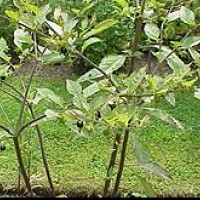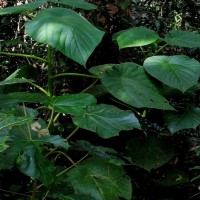Top Ten Poisonous Plants to Watch Out for in the Wild
This is a list of Top 10 poisonous plants to watch out for in the wilderness. Some of them might look beautiful, but remember that appearances are deceptive and these plants could leave you in a bad state of health for a long time.
Deadly nightshade is one of the most toxic plants in the Eastern Hemisphere. While the roots are the most deadly part, poisonous alkaloids run through the entirety of the plant.
Deadly nightshade berries pose the greatest danger to children, as they are attractive and are deceptively sweet at first bite. Yet just two berries can kill a child who eats them, and it takes only 10 or 20 to kill an adult. Likewise, consuming even a single leaf can prove fatal to humans.
Foxglove, while very beautiful with its trumpet like blossoms, are very poisonous to dogs, cats, and even humans. Foxglove contains naturally-occurring poisons that affect the heart, specifically cardenolides or bufadienolides. The chemicals secreted by this plant are poisonous and can lead to fatal results even on very small doses of consumption.
It originates from Europe, but it is domesticated and widely spread in North America today. Foxglove grows on the slightly acidic soil. It can be found in the open woodlands, on the rocky slopes, sea cliffs, meadows and wastelands.
This one's technically a fungus, but still earns a spot on this list due to being known as the most poisonous mushroom in the world. Upon ingestion, symptoms include gastrointestinal upsets such as high levels of abdominal pain, extreme nausea, vomiting and diarrhoea, and occur rather quickly. The death cap (Amanita phalloides) is potentially fatal if ingested. It grows in many parts of Asia, and is quite uncommon in Australia.
While kissing under the mistletoe is great, eating the plant's leaves and berries is not. The leaves and berries contain the highest concentration of toxic chemicals such that drinking a tea from the plant can result in sickness and possibly death. The risk of fatality is higher for children and pets than adults. This plant is commonly found in certain parts of Europe and Eastern United States.
Water hemlock is the most violently toxic plant that grows in North America. Only a small amount of the toxic substance in the plant is needed to produce poisoning in livestock or in humans. The toxin cicutoxin, causing damage directly on the central nervous system, is a violent convulsant. These plants are common in the wet soils of British Columbia.
It is very toxic and sheep, cattle, swine, horses, and other domestic animals are poisoned by eating small amounts of green or dried plant. It is also extremely poisonous to humans. Poison - hemlock is sometimes confused with western water hemlock, a more deadly species, because the names are similar. It is found in certain parts of United States and Western Europe.
Ilex, or holly, are evergreen or deciduous trees, shrubs, and climbers from tropics to temperate zones worldwide. Holly berries can cause vomiting and diarrhoea. They are especially dangerous in cases involving accidental consumption by children attracted to the bright red berries. Ingestion of over 20 berries may be fatal to children.
Holly leaves, if eaten, might cause diarrhea, nausea, vomiting, and stomach and intestinal problems.
Holly plants might be toxic to pets and livestock. This plant is found along the west coast of North America.
Iris is a genus of 260-300 species of flowering plants with showy flowers. Another example of a plant that can cause gastrointestinal problems upon consumption and can also cause skin irritation. These plants are spread widely across North and South America

I hate ivy, and I hate the name, too. It is SO annoying!
All parts of the yew plant are toxic to humans with the exception of the yew berries (however, their seeds are toxic), additionally, male plants release cytotoxic pollen, which can cause headaches, lethargy, aching joints, itching, and skin rashes; it is also a trigger for asthma. It is found in Britain, western Asia and South Africa.
Brushing this plant will cause an uncomfortable pain for several hours. This is due to the fact that the hairy linings of the plant have tiny vesicles that secrete substances like Formic acid as a self-defense mechanism. This plant is common in most parts of the world, having temperate or tropical climates.
